On-Premise vs. Cloud: Key Differences, Benefits and Risks
- Nitin Yadav
- Knowledge
About
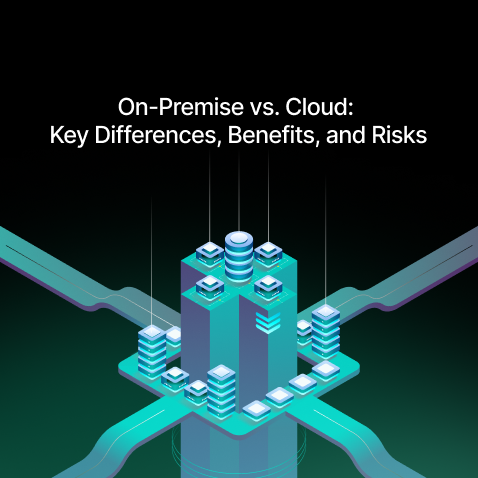
Choosing between on-premise and cloud computing is a crucial decision for businesses. This article explores the key differences, benefits, and risks to help organizations select the best IT infrastructure model.
Industries
- Cloud Computing, Cloud Security, Digital Transformation, Enterprise IT, IT Infrastructure, On-Premise vs Cloud
Share Via
Introduction
The choice between on-premise and cloud computing is one of the most critical decisions businesses must make when designing their IT infrastructure. Both options offer distinct advantages and challenges, impacting costs, scalability, security, and management. With the rapid evolution of digital transformation, businesses must evaluate their infrastructure strategy based on operational efficiency, regulatory compliance, financial constraints, and future growth plans.
This article provides an in-depth comparison of on-premise and cloud computing, helping businesses make informed decisions on the best deployment model based on their needs.
What is On-Premise vs. Cloud Computing?
What is On-Premise?
On-premise computing refers to hosting and managing IT infrastructure within a company’s physical location. Organizations purchase and maintain their own servers, networking equipment, and storage systems, providing full control over their infrastructure.
Key Features of On-Premise Computing
- Hardware and software are owned, managed, and maintained by the organization.
- Requires dedicated IT staff for maintenance, troubleshooting, and upgrades.
- Data remains within the company’s facilities, enhancing security and compliance.
- Offers long-term cost predictability but requires large upfront investment.
Example: A bank that stores customer data on local servers due to regulatory compliance requirements.
What is Cloud Computing?
Cloud computing involves outsourcing IT infrastructure to third-party providers like AWS, Azure, or Google Cloud, allowing businesses to access computing resources on-demand without managing physical hardware.
Key Features of Cloud Computing
- Resources are hosted in data centers managed by cloud service providers.
- Offers pay-as-you-go pricing, reducing capital expenditure.
- Allows businesses to scale computing resources dynamically.
- Security and compliance depend on the provider’s built-in features and regulatory adherence.
Example: A startup using AWS EC2 instances to host their web application, scaling up resources as traffic increases.
Key Differences Between On-Premise and Cloud
The core differences between on-premise and cloud computing impact cost structures, scalability, security, and operational efficiency. Below is a detailed comparison:
Factor | On-Premise | Cloud |
Infrastructure | Managed and maintained in-house. | Hosted and managed by cloud providers (AWS, Azure, GCP). |
Cost Model | Capital Expenditure (CapEx) – High upfront costs. | Operational Expenditure (OpEx) – Pay-as-you-go pricing. |
Scalability | Limited by hardware capacity. | Highly scalable on demand. |
Security | Full control over security. | Managed security with cloud compliance. |
Maintenance | IT team is responsible for updates and fixes. | Cloud provider handles updates and maintenance. |
Disaster Recovery | Requires backup solutions and redundancy planning. | Built-in disaster recovery and failover options. |
Compliance | Easier to meet strict industry regulations. | Compliance varies by provider and region. |
Each model offers unique advantages and trade-offs, making it essential for businesses to align their IT strategy with long-term goals.
Benefits of On-Premise Infrastructure
Key Advantages:
- Full Control – Businesses have complete ownership over hardware, software, and security configurations.
- Better Data Privacy – Ideal for industries with strict data sovereignty laws (e.g., healthcare, finance).
- Customizable Security Policies – Can implement custom firewalls, encryption, and access controls.
- Predictable Costs – No unexpected monthly cloud fees; cost is largely fixed after initial investment.
Best Use Cases for On-Premise
- Financial institutions requiring strict regulatory compliance.
- Organizations handling sensitive, proprietary data.
- Businesses with low-latency requirements (e.g., stock trading, manufacturing).
- Companies with long-term IT investment plans and stable workloads.
While on-premise solutions provide reliability and security, they require significant maintenance efforts and upfront investment.

Benefits of Cloud Computing
Key Advantages:
- Cost Efficiency – No hardware procurement or maintenance costs; pay only for what is used.
- Scalability & Flexibility – Resources can be scaled up or down instantly.
- High Availability & Redundancy – Data is stored across multiple data centers, reducing downtime risks.
- Faster Deployment – Services can be provisioned within minutes, accelerating project timelines.
- Security & Compliance – Leading cloud providers offer certified security frameworks (SOC 2, ISO 27001, GDPR, HIPAA).
Best Use Cases for Cloud Computing
- Startups & SMEs needing cost-effective, scalable solutions.
- Businesses with remote teams requiring cloud collaboration tools.
- AI/ML, big data, and analytics workloads needing high computing power.
- Companies expanding globally and requiring multi-region deployments.
Cloud computing provides scalability, flexibility, and cost savings, but businesses must manage risks such as vendor lock-in and data security concerns.
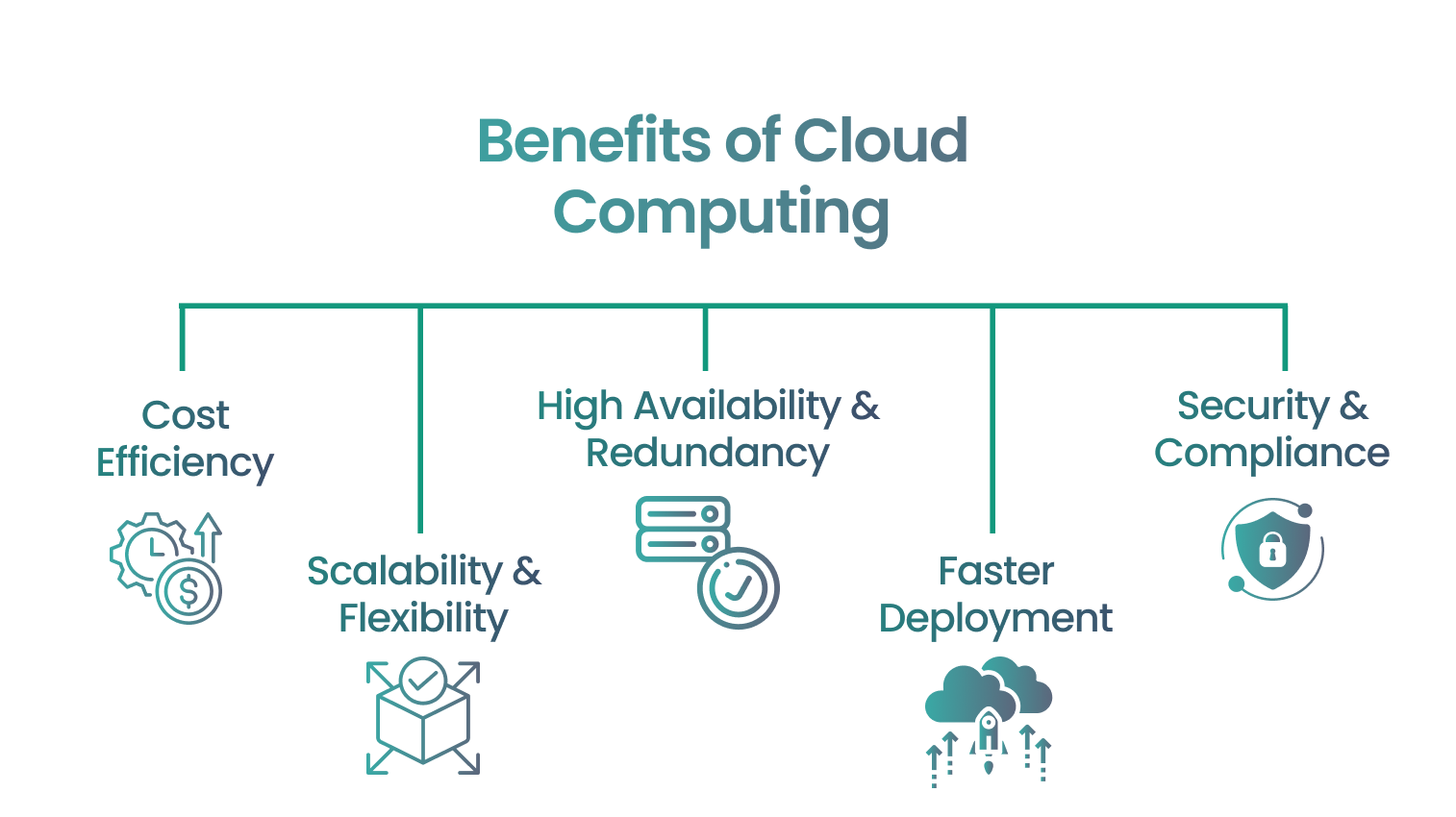
Hybrid Cloud: The Best of Both Worlds?
A hybrid cloud approach combines both on-premise and cloud solutions, allowing businesses to optimize performance, cost, and security.
Key Benefits:
- Balancing Costs: On-premise for critical workloads, cloud for scalable resources.
- Regulatory Compliance: Keep sensitive data on-premise while using the cloud for general computing.
- Disaster Recovery & Redundancy: Ensures business continuity by leveraging both environments.
Example: A healthcare provider storing patient records on-premise while using cloud-based AI models for diagnostics.
Conclusion: Which One Should You Choose?
- On-Premise: Best for security-sensitive industries, regulated businesses, and organizations with stable workloads.
- Cloud Computing: Ideal for scalability, cost-efficiency, and global access.
- Hybrid Cloud: Suitable for businesses needing flexibility and security balance.
Evaluate your business needs, budget, security requirements, and scalability goals before making a decision.
Need expert guidance? Consult with cloud specialists like SquareOps to find the right deployment strategy!
Frequently asked questions
On-premise infrastructure is hosted and managed in-house, while cloud computing relies on third-party providers like AWS, Azure, or Google Cloud for IT resources.
On-premise requires high upfront investment (CapEx) for hardware, while cloud follows a pay-as-you-go model (OpEx), reducing initial costs.
Cloud providers offer advanced security features, but businesses with strict data sovereignty laws often prefer on-premise for full control over security.
Cloud computing enables instant scaling of resources, while on-premise systems require purchasing and setting up new hardware to scale up.
Industries like banking, healthcare, and government that require strict compliance and high security benefit from on-premise solutions.
Risks include vendor lock-in, data privacy concerns, compliance challenges, and unpredictable costs if resources are not optimized.
A hybrid cloud combines on-premise and cloud infrastructure, allowing businesses to keep sensitive data in-house while using cloud services for scalability.
Cloud providers offer built-in disaster recovery and failover solutions, while on-premise setups require separate backup strategies and infrastructure.
For short-term flexibility and cost savings, cloud is ideal, but for long-term stability and predictable costs, on-premise may be more cost-effective.
Businesses should evaluate their needs based on cost, security, scalability, and compliance requirements to determine the best approach.
Related Posts
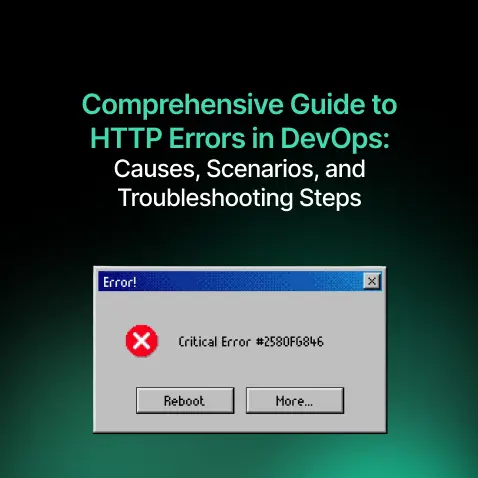
Comprehensive Guide to HTTP Errors in DevOps: Causes, Scenarios, and Troubleshooting Steps
- Blog

Trivy: The Ultimate Open-Source Tool for Container Vulnerability Scanning and SBOM Generation
- Blog

Prometheus and Grafana Explained: Monitoring and Visualizing Kubernetes Metrics Like a Pro
- Blog
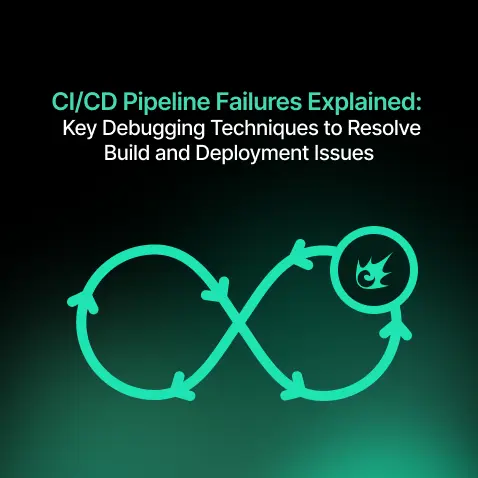
CI/CD Pipeline Failures Explained: Key Debugging Techniques to Resolve Build and Deployment Issues
- Blog
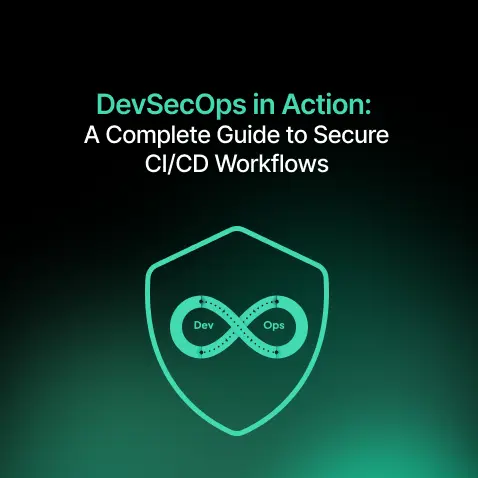
DevSecOps in Action: A Complete Guide to Secure CI/CD Workflows
- Blog

AWS WAF Explained: Protect Your APIs with Smart Rate Limiting
- Blog

